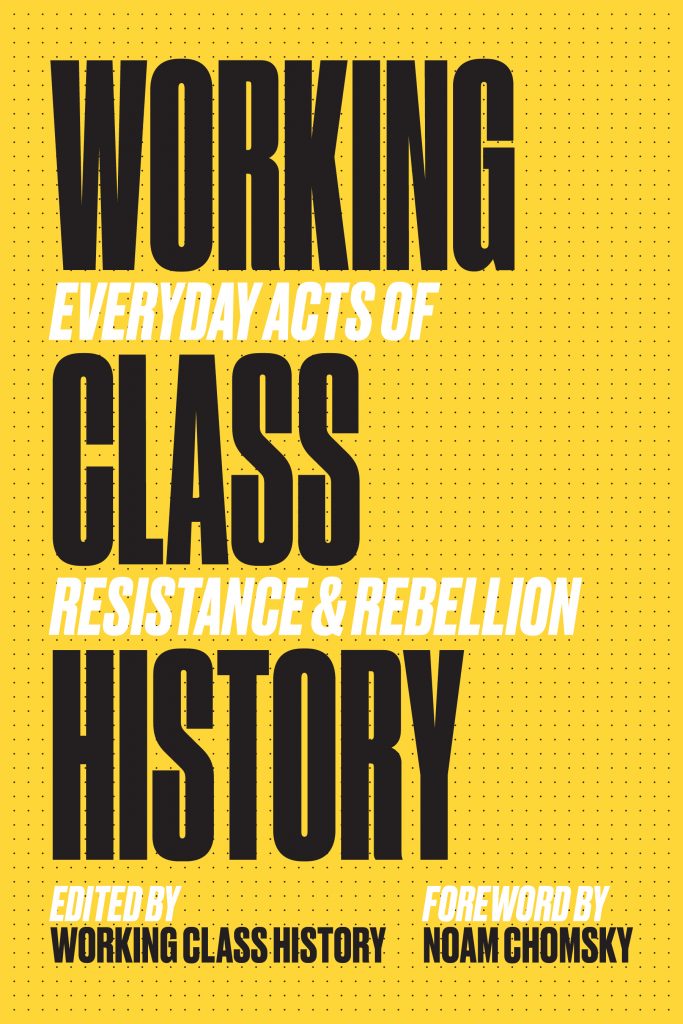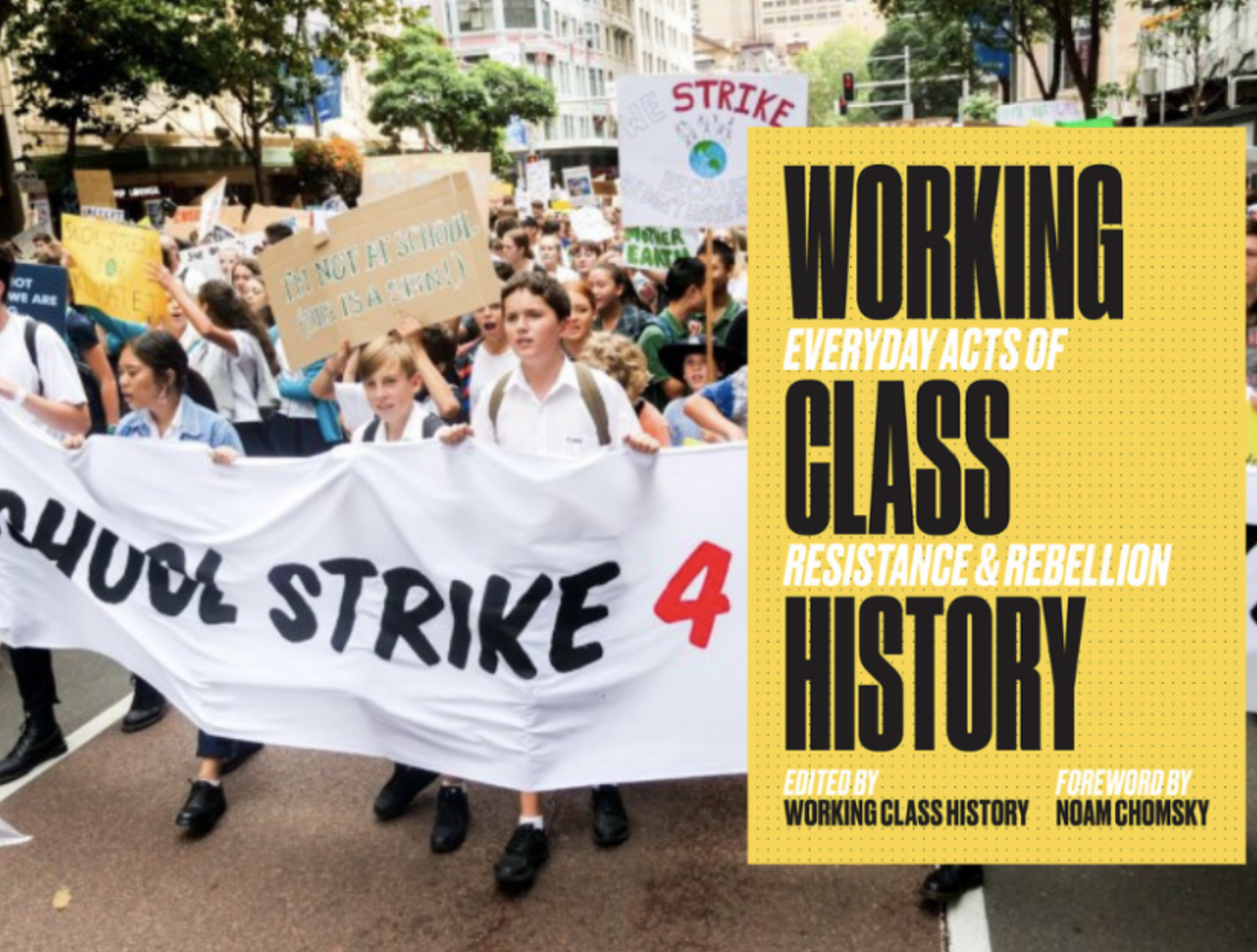By Alex Salmon
Green Left
May 31, 2021
“The history of all hitherto existing society is the history of class struggle”, proclaimed Karl Marx in his opening to The Communist Manifesto.
Records of class struggles date back to strikes by construction gangs during the reign of Ramses III in Ancient Egypt on October 13, 1357 BC.
Formed in 2014, the Working-Class History Project (WCHP) set up a data base of historical events, as a way of understanding how working-class struggles have created the world we live in today. Since then, WCHP has created a podcast series. It published Working Class History last year.
Working Class History documents two events for each day of the year, starting on January 1 with the declaration of Haiti’s Independence by the former slaves of the French Colony in 1804, and the January 1, 1994 uprising by Indigenous rebels from Mexico’s Chiapas region against the Mexican state and the North American Free Trade Agreement, marking the beginning of the Zapatista movement.
The English Peasant revolt reached its height on June 14, 1381, and, in spite of its defeat, marked the beginning of the end of feudalism. This paved the way for the enactment of King Henry VIII’s vagrancy laws on June 16, 1531, which created the conditions for modern capitalism, by enabling people to be kicked off common lands and forced to work for a wage to survive.
Such laws would be introduced elsewhere in Europe, creating the working class and facilitating the spread of capitalism, which eventually became worldwide. It was followed by evils such as colonialism, slavery and racism — justified by capitalist ideology — but which also created the conditions for the oppressed to resist.
In contrast to the stereotype of the straight, white — often male — factory worker, Working Class History demonstrates that the working class is anyone who doesn’t own the factories, farms, corporations or stocks, and are therefore forced to sell their labour to the capitalist class.
The working class is diverse in race, gender, sexuality and location. The book cites the example that, on December 28, 1973, workers on the Skylab 4 space station staged the first strike in space.
Systems of oppression, such as racism, sexism, homophobia, transphobia and ableism, as well as environmental destruction, will always be worse for working class people and communities.
Because the capitalist class seeks to keep the working class divided, Working Class History stresses the importance of supporting all working-class struggles, for example, underpaid migrant workers improving their pay and conditions means employers can’t use them to undercut native-born workers, therefore a victory for one group of workers is a victory for all workers.
A key example of anti-racist class struggle unionism was the Industrial Workers of the World (IWW) who were founded in Chicago on June 27, 1905. Aiming to organise previously unorganised workers — regardless of race and industry — into one big union to take control of society, the IWW spread to Australia, Chile and South Africa, and won many gains in the face of savage repression from employers and the state.
The lengths the capitalist class will go to, to maintain their power, are also demonstrated with various examples in Working Class History: the September 11, 1973, CIA-backed coup in Chile; the August 16, 1819, Peterloo Massacre of working-class men and women demonstrating for universal suffrage in Manchester, England; the British army’s massacre of predominantly Sikh pilgrims in Amritsar on April 13, 1919.
In spite of this repression, workers and other oppressed peoples have always found a way to fight back. The book includes the huge impact of the Wave Hill walkout by Aboriginal Stockmen on August 23, 1966, and the Stonewall Riots in New York City on June 28, 1969, when members of the LGBTI community fought back against police oppression, and where trans women and people of colour played a key role.
These events would play a key role in the Aboriginal land rights and LGBTI liberation movements in years to come.
One of the key moments in history, the 1917 Russian Revolution began on International Women’s Day on March 8, 1917, in Petrograd (St Petersburg), when thousands of women — workers and housewives — went on strike and sparked the events that led to the downfall of the Tsarist regime. By November that year, the workers took power in Russia.
A favourite moment of mine in the book was on April 6, 1871, during the Paris Commune — the first example of workers taking power — when Rebel troops of the 137th Battalion of the Paris Commune seized a Guillotine, smashed it to pieces and burned it, seeing it as a tool of capitalist repression.
The beginning of the Flint General Motors sit-down strike by United Auto Workers union members on December 30, 1937 — which happens to fall on my birthday — is another.
The authors’ aim is that these brief snapshots will inspire the reader to learn more about these events. Working Class History is a great tool for understanding how every gain workers and ordinary people have made has always come through struggle and that we need to continue that struggle to create a genuine alternative to capitalism.







